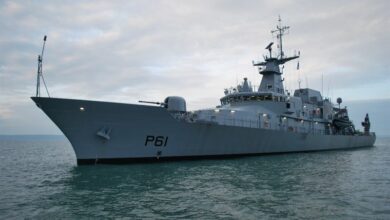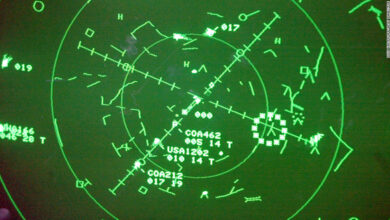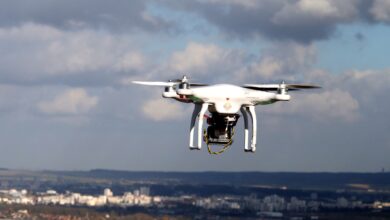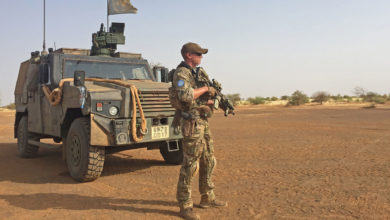Northern Ireland police recover IED in Derry city search
Police in Northern Ireland recovered a command wire initiated improvised explosive device in the city of Derry following the weekend discovery of a mortar nearby.
The Police Service of Northern Ireland released images of the device discovered during a large-scale search operation in the Creggan area of the city on Monday, September 9.
It was discovered in a parked vehicle in a residential area near other houses on the street, the PSNI said Tuesday.
“We assess that this device was to be used against a police patrol in the Creggan area of the city. It is our assessment that the New IRA is responsible for this bomb. The bomb would have killed or maimed anyone near it when it detonated,” PSNI Assistant Chief Constable for District Policing Mark Hamilton said.

The search operation was launched early Monday in response to the discovery of a horizontal mortar near a house in Strabane, less than a mile from the Northern Ireland-Ireland border.
Police have said they believe the New IRA is behind that device as well.
“By bringing a viable bomb into the community they have again proved that have no regard for the lives of anyone living in Creggan. Once again they exploited some of the young people in the community to attack police and have brought disruption and misery to families,” Hamilton said Tuesday.
In April, the New IRA admitted shooting to death journalist Lyra McKee during rioting in the Creggan area of Derry. McKee was shot on April 18 by an unknown gunman who was firing at police, in the city, also known as Londonderry. She later died from her injuries in hospital.
The rioting that killed McKee broke out as police were trying to carry out searches in connection with dissident activity. Some 40 petrol bombs were thrown at police during the operation Monday night in similar disturbances, PSNI said.
In January, a car bomb exploded outside a courthouse in Derry, an attack also blamed on the New IRA.
The 1998 Good Friday or Belfast Agreement ended what is known as The Troubles, three decades of violence in Northern Ireland beginning in the late 1960s in which more than 3,500 people were killed, the majority by predominantly Catholic Irish republicans who want the reunification of Ireland, but also by mainly Protestant loyalists who want Northern Ireland to remain part of the United Kingdom, as well as by the security forces.
The violence also spilled over into Ireland, the United Kingdom mainland, and Europe.
The Provisional Irish Republican Army called a final ceasefire in 1997 and announced an end to its armed campaign in 2005, stating that it would seek to achieve its aims through peaceful political means. Various dissident Irish republican groups opposed to the peace process split from the Provisionals and continued to use the name IRA, and there have been sporadic violent incidents since the 1998 Good Friday agreement.
The largest dissident grouping, known as the New IRA, has been increasingly active in recent months.
Police in Northern Ireland and Ireland have said that a return to a hard border on the island after Brexit could result in an increase in attacks by militant groups.
Last month police escaped injury when a device exploded near Newtownbutler about 55 miles (88 km) south of Strabane, and about a mile from two separate border crossings. Police had been called to the Wattle Bridge area of County Fermanagh over a hoax bomb and were investigating it when a second device detonated.
Deputy Chief Constable Stephen Martin said the New IRA and another dissident Irish republican group called the Continuity IRA “would be a very good starting point for the investigation” into the Wattle Bridge explosion.
The Continuity IRA is believed to be responsible for another bomb in Craigavon in County Armagh on July 26.
In that incident, the Irish News received a telephone call claiming that a “horizontal mortar was fired at a passed police patrol” on the Tullygally Road but had “missed its target,” and that left “a warhead in the vicinity.”
Police later discovered what appeared to be a horizontal mortar that had been fired, but on examination, a viable booby-trap bomb was found hidden inside a concrete block beside a metal tube.
Since the January car bomb, a number of weapons caches have been uncovered in the southeast of Northern Ireland and just across the border in Ireland.
In one incident, PSNI officers recovered a horizontal mortar tube and command wire during an operation near Castlewellan in County Down near the border.
Dissident Irish republicans have also taken credit for a series of explosive devices sent to Great Britain in March, with the New IRA claiming they sent four mail bombs that were recovered in London and Glasgow. A fifth “viable device” was discovered at the National Returns Letter Centre in Limerick after it had been returned by the postal service from the United Kingdom.












One Comment